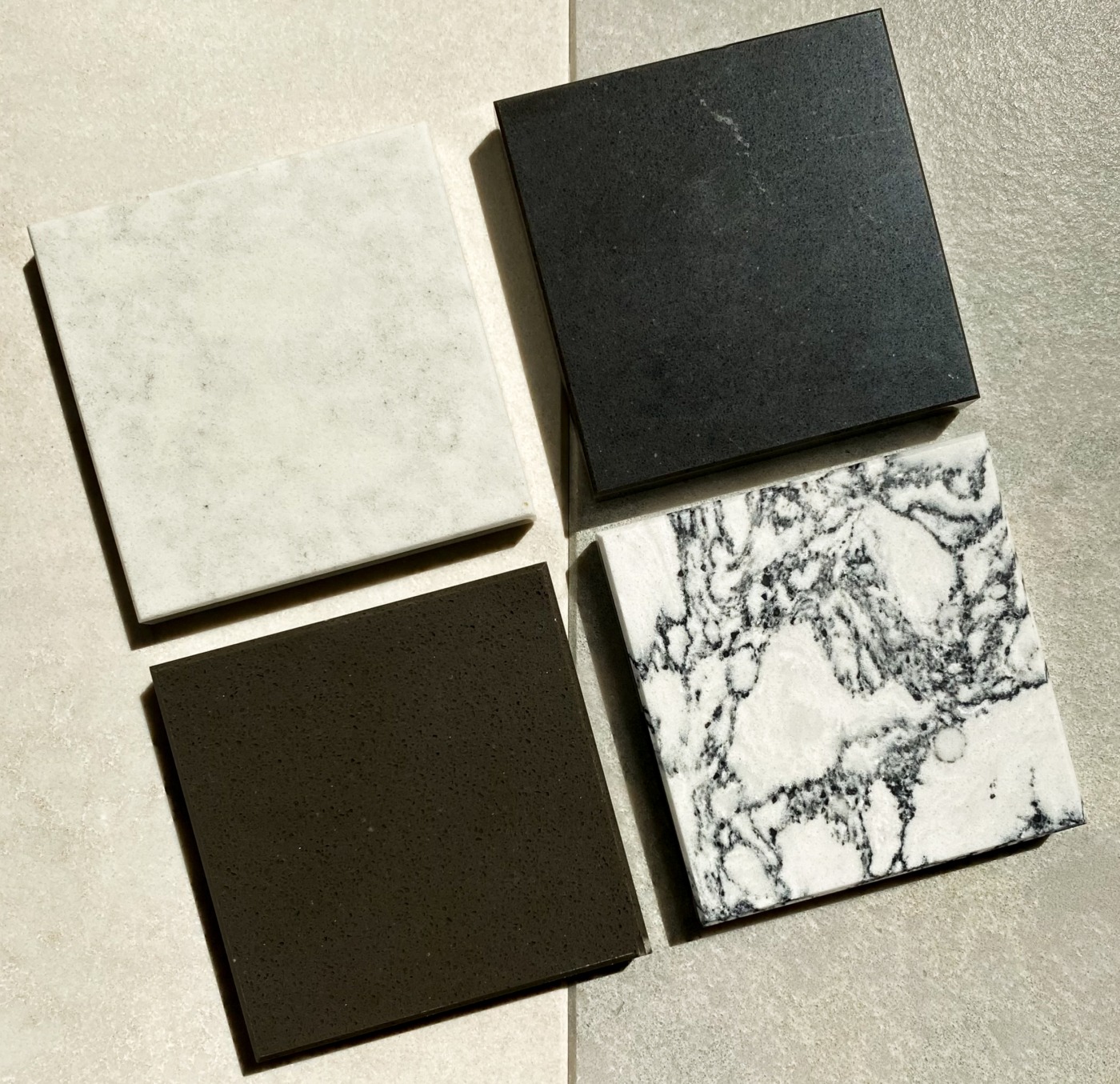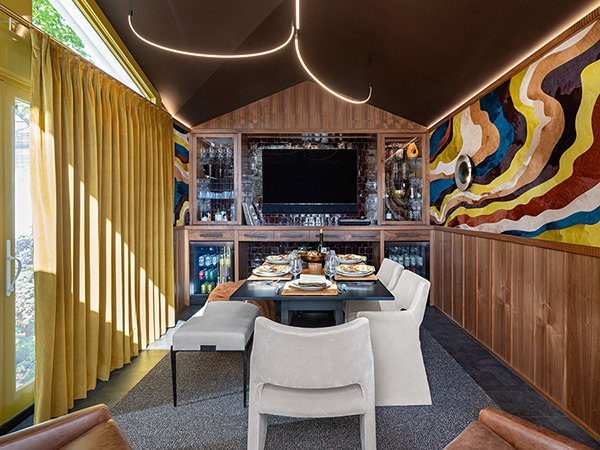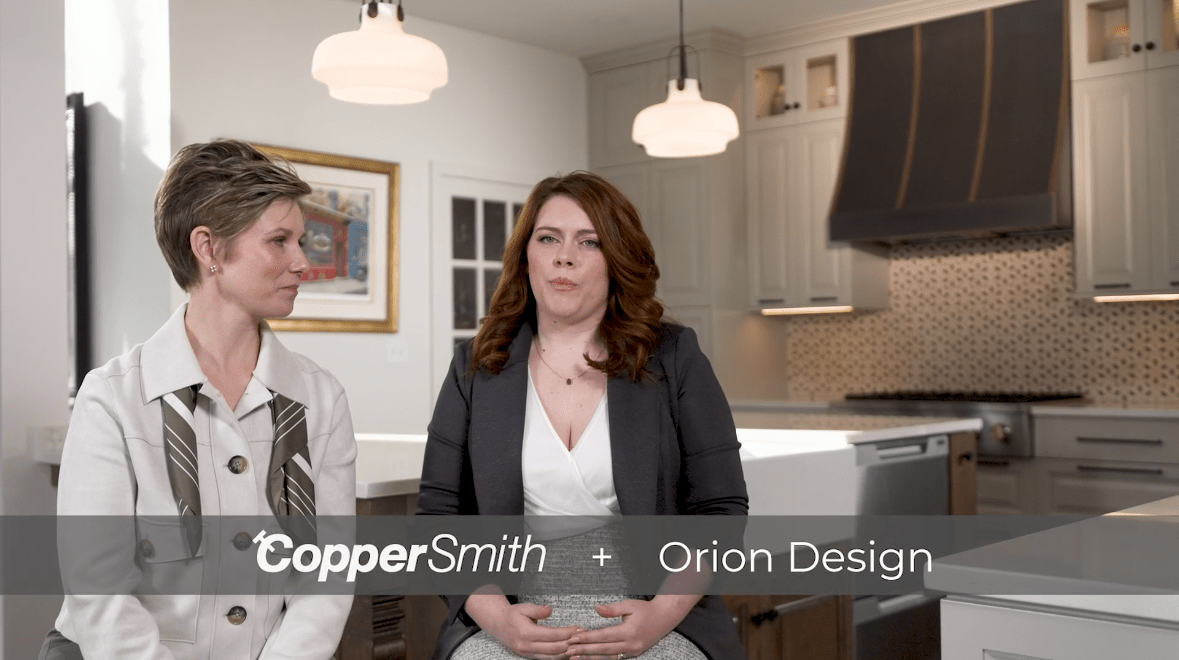One of the more challenging decisions to make when designing your home is the choice of countertops. They can be a statement piece or something that is the mending element of the other aspects of a kitchen or bathroom. Paint colors, light fixtures, and hardware can change as years go by and your style interests alter; but, countertops are a solid investment. Meaning their physical weight as well as price. Replacing your countertops is a major feat, usually accompanied by new backsplash and possibly cabinetry due the inevitable damage caused by their removal.
Selecting countertops can be stressful but we can help with that! When working with clients, we like to make a visit to a stone yard as they have full slabs of the material. A small 4 inch by 4inch sample hardly does a large piece of stone any justice, all the detailing can be missed in the pieces we have on hand in the studio. However, that is where we will start. Selecting a variety of tones and veining based on a client’s interests and seeing which pieces compliment the tile, flooring, and paint colors that may already be selected.
Part of our job as designers is to inform clients of the options available along with the pros and cons of each material and what we believe will work best for their needs and stand the test of time. Quartz, granite, quartzite, marble, soapstone, and wood are among the most popular and standard materials that are used in projects. Here at Orion Design, we love all the options and enjoy finding the best fit for our clients. Continue reading below for a description of each material along with some images of completed projects that showcase each material.
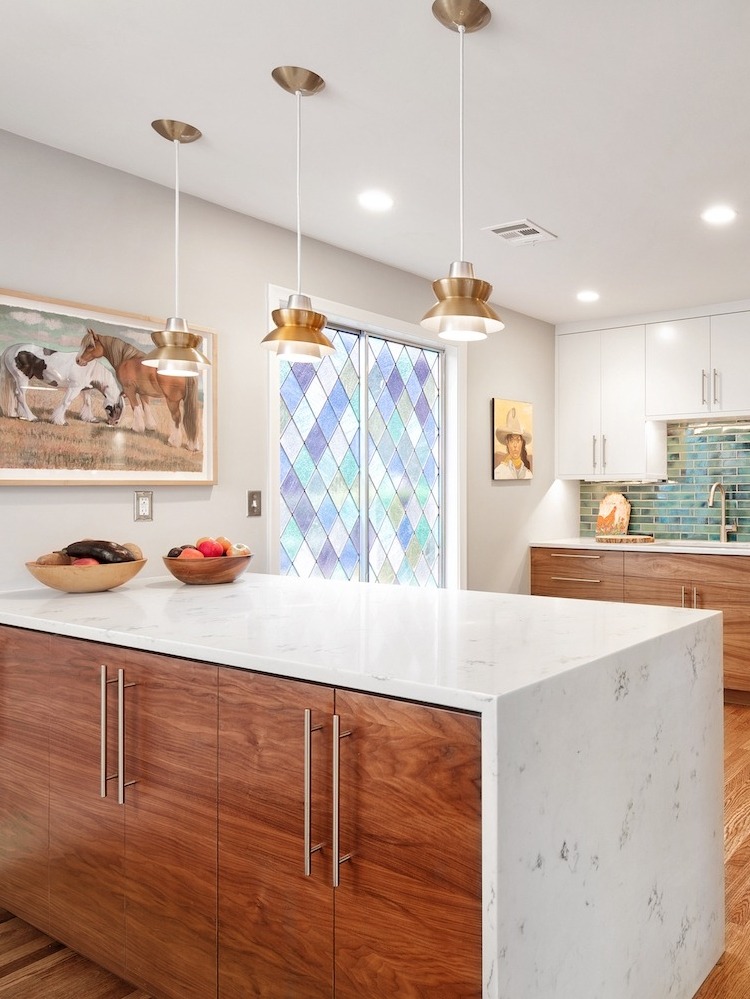
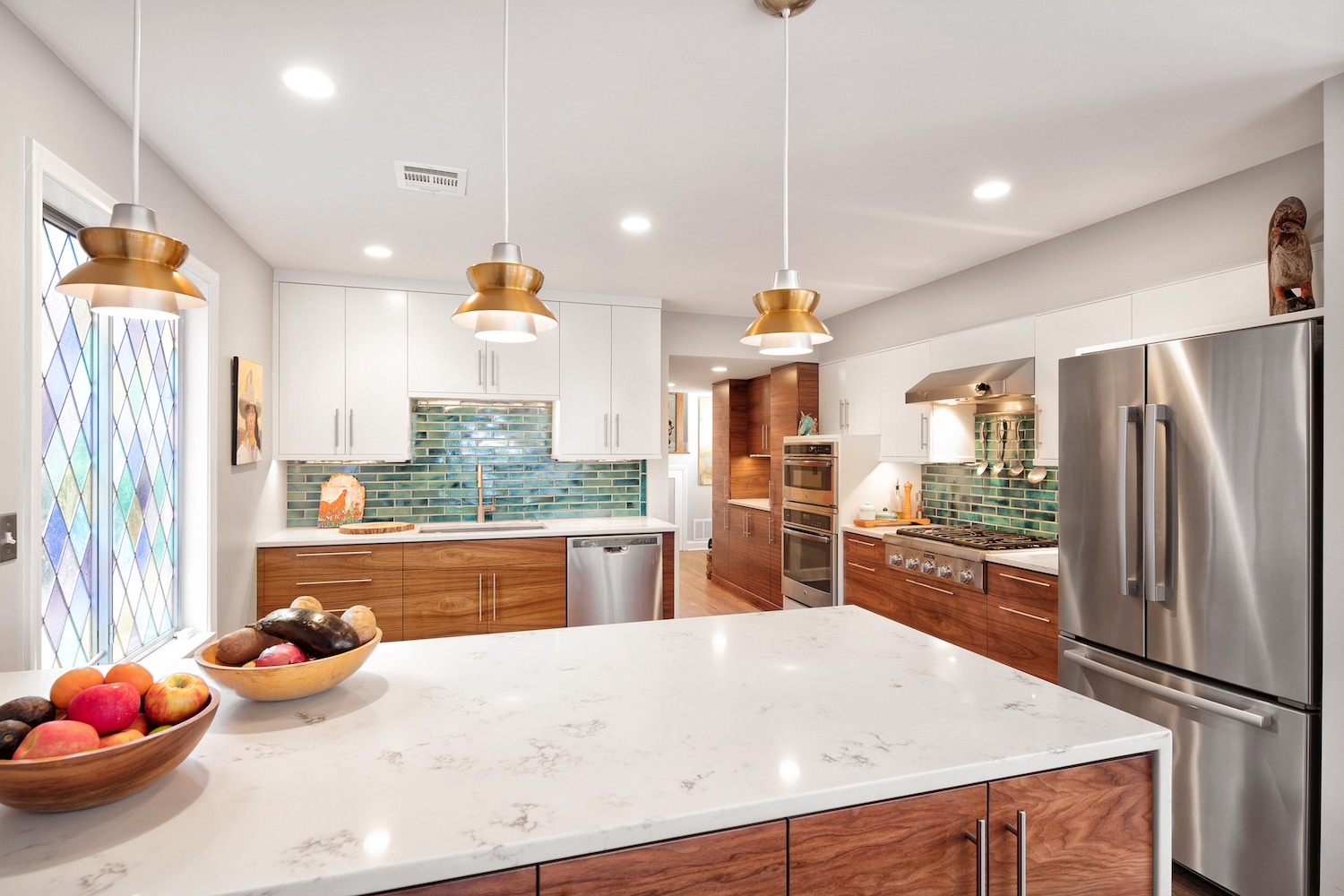
Quartz
Quartz countertops are a material that we use more often than not on projects. It is a man made product.. Quartz manufacturers use a particular ratio of loose quartz, resin, and pigments to make up the large slabs of stone that we see in homes all the time. With this process, manufacturers have the ability to create a variety of colors and veining that is reminiscent of marble; only having a bit more control over the final appearance compared to a true natural stone. A difference between a quartz and marble or granite countertops is the maintenance. Natural stone needs to be sealed when installed and regularly depending on the wear of your kitchen; and is prone to etching and discoloration from foods being left on the surface. With quartz being one of the most durable materials for countertops, and requiring the least amount of maintenance, it can have a close cost to other natural stone materials.
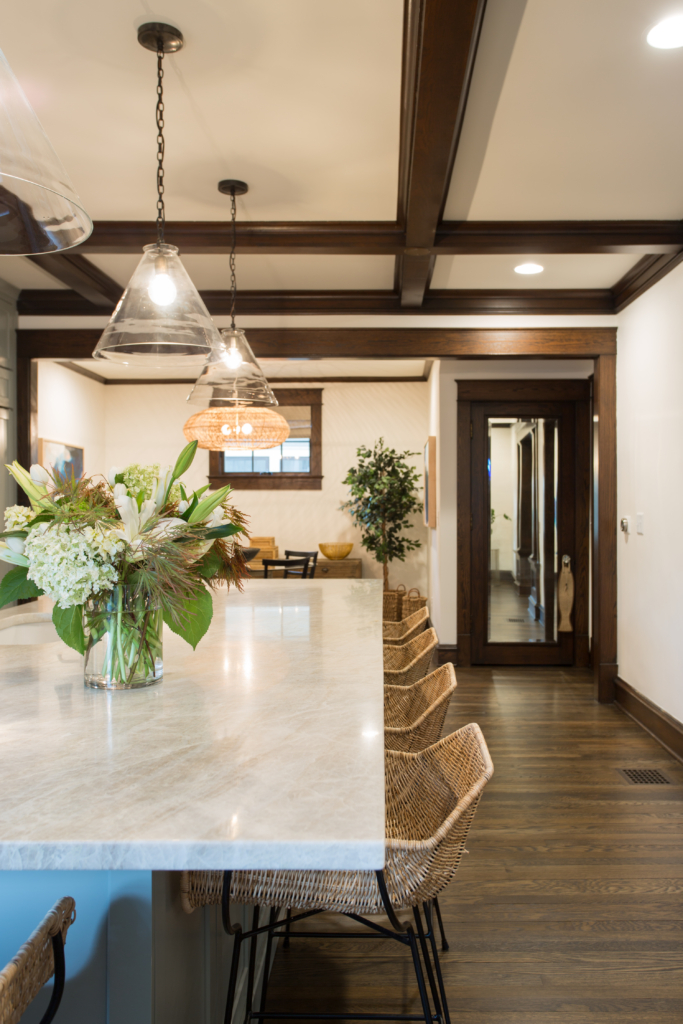

Quartzite
While looking for countertops, some may be confused if there is a difference between quartz and quartzite. They sound similar enough. The true difference is the process in which they are made; one being man-made and the other being natural. Quartz, as discussed earlier, is a mixture of loose quartz, resin, and pigment that are bound together. Quartzite starts out as sandstone, and goes under a process much like diamonds go through, with heat, pressure, and time. The quartz grains become tightly packed together and form a very dense and durable stone. Since quartzite is a natural stone, each slab will vary in appearance. This is where visiting a stone yard is extremely helpful in selecting the exact piece of stone you want and placing it on hold until it is ready to be templated. However, in comparison to other natural stones, it is low maintenance, heat resistant, and more durable although it can etch over time if it comes into contact with acidic materials and certain cleaning products. As it can be unmatched in its stunning visual appearance the pricing can reflect that in making it one of the more expensive materials to utilize. It will be a true focal point of the kitchen.
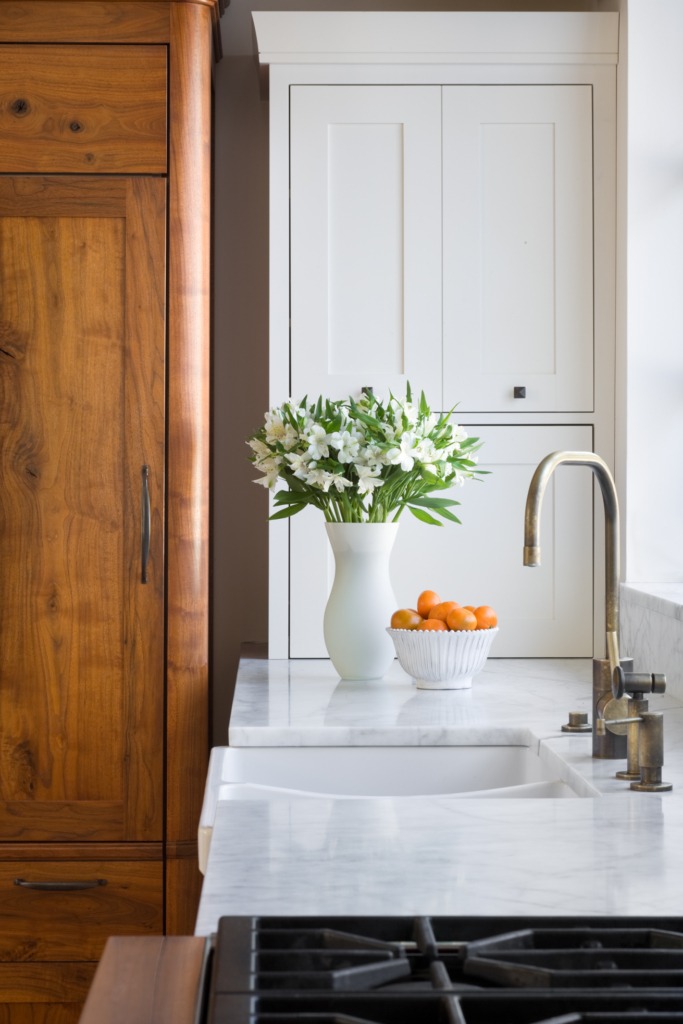
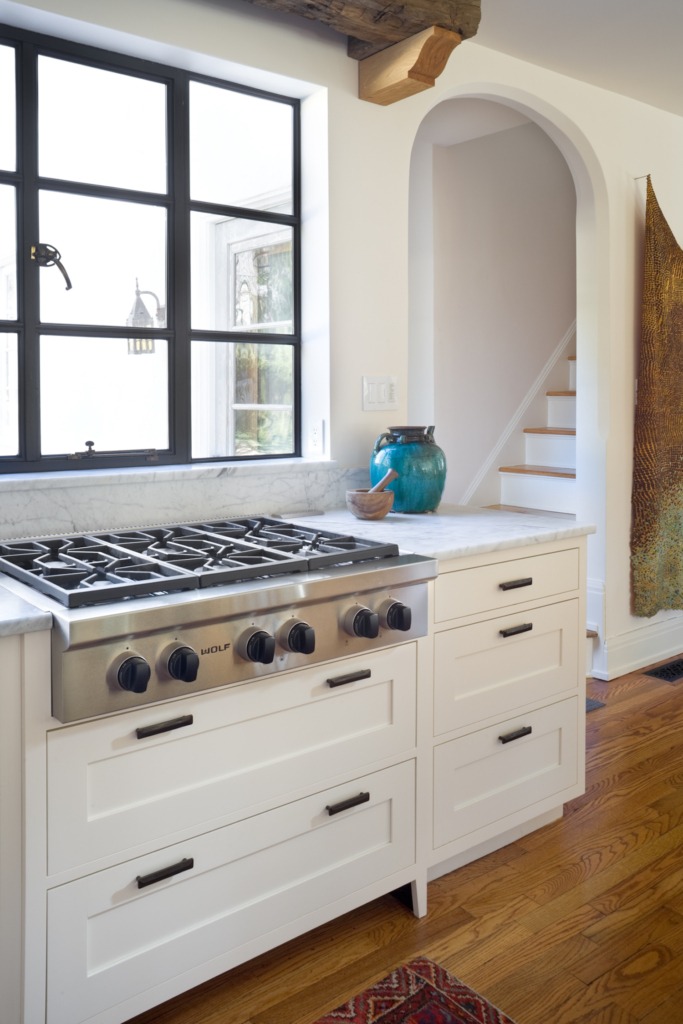
Marble
We all know and love marble, it’s timeless, elegant, and clean looking. Marble doesn’t always have to be bright white with harsh veining; it comes in tones of white, yellow, gray, and even sometimes a darker mid tone gray or jet black. All with varying types of veining depending on the type and cut you choose. Since marble is a natural stone that can be porous, we tend to steer away from placing it in areas that will wear heavily over time. It does need to be sealed once installed and resealed frequently as things like lemon juice or other acid foods spill onto it. Another caveat of a marble countertop is the uncontrollable nature of the appearance in each slab. However, that is part of the beauty of marble, the variation in veining, the flowing change in the body color.
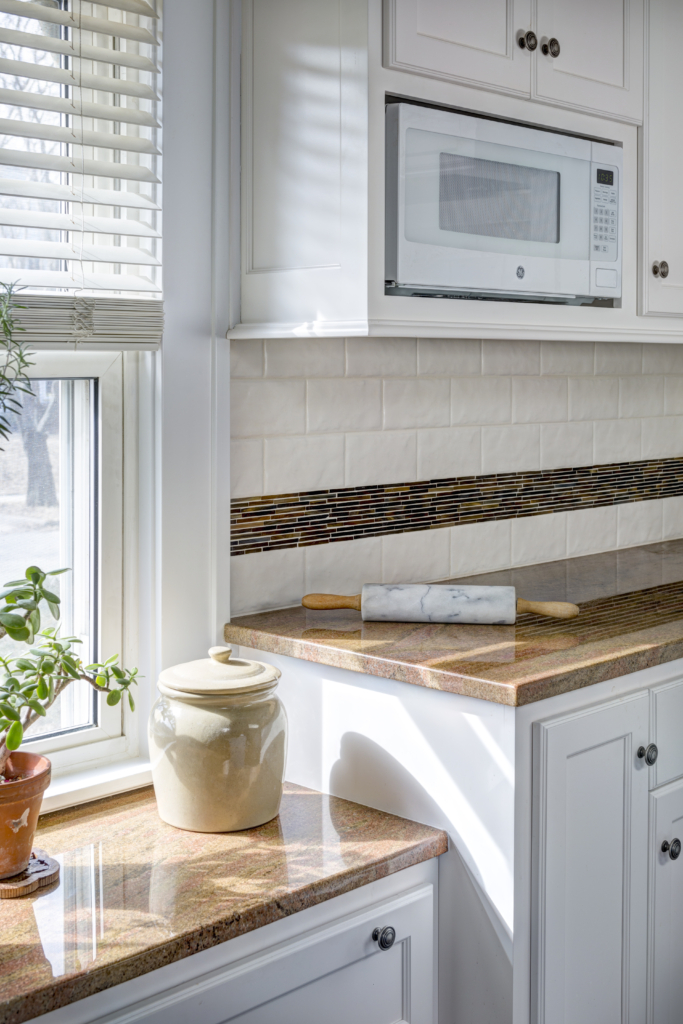
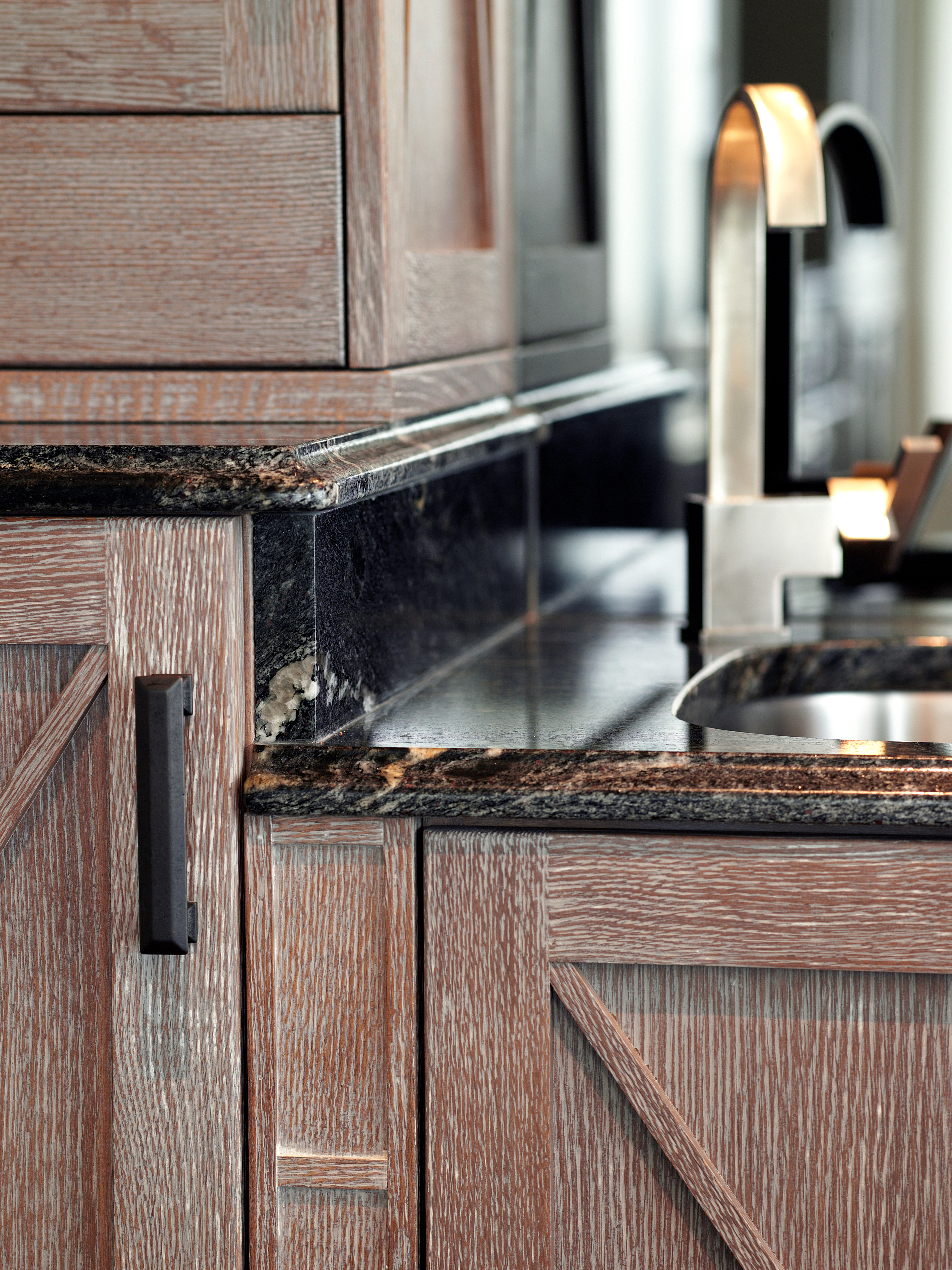
Granite
Granite is a natural stone composed of quartz minerals and feldspar, and much like marble, each slab will have a different mineral composition, giving you a truly unique piece of stone in your home. Granite has a signature look that comes with the speckling that appears in the formation of the stone. These variations can be cream, gray, black, sometimes even blue and pink tinted; giving you a large selection of slabs to choose from. Unlike its counterpart, it is a very dense and resilient material that is harder to stain if properly sealed and will not chip as easily as marble. Granite can lend a stunning look and natural element to your kitchen.
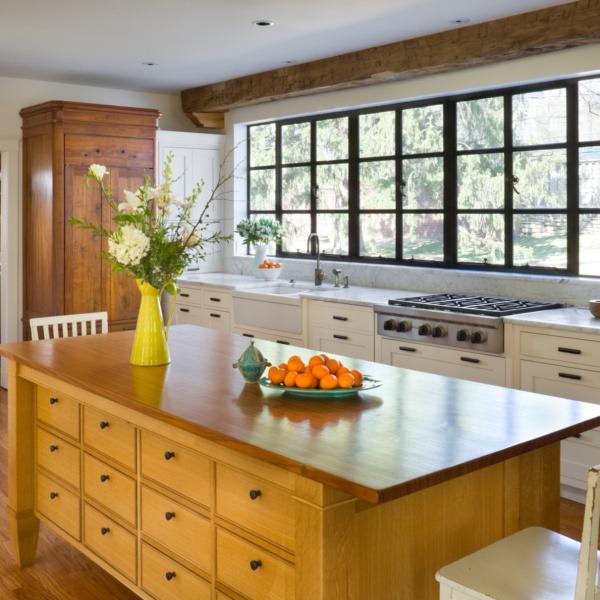

Wood
Taking a break from stone, wood countertops are a great way to reintroduce warmth and new textures into your home. They are typically made from traditional butcher block or hardwoods laminated together with glue. Whether or not they will be used for meal preparation, wood countertops are forgiving and can take the wear and tear of a cutting board, and are much more gentle on dinnerware than stone counters will be. In selecting the finish applied you must consider how the countertop will be used. If it will be used in an area where food preparation will take place we can not apply a stain or clear coat and instead must rely on the natural tone of the wood along with a food safe oil. For areas where food preparation is not taking place we can apply stain and a clear coat to give us the desired tone. Wood countertops can be refinished a number of times to refresh the surface from knife cuts, burn marks, or even deep stains. A thing to remember about wood countertops is that they are a material that will grow and shrink much like your doors do when the temperature changes with the seasons. Unfinished counters will require some maintenance with re oiling the surface each month; clear coated wood will need refinished every couple of years to keep the appearance and sanitary levels up.
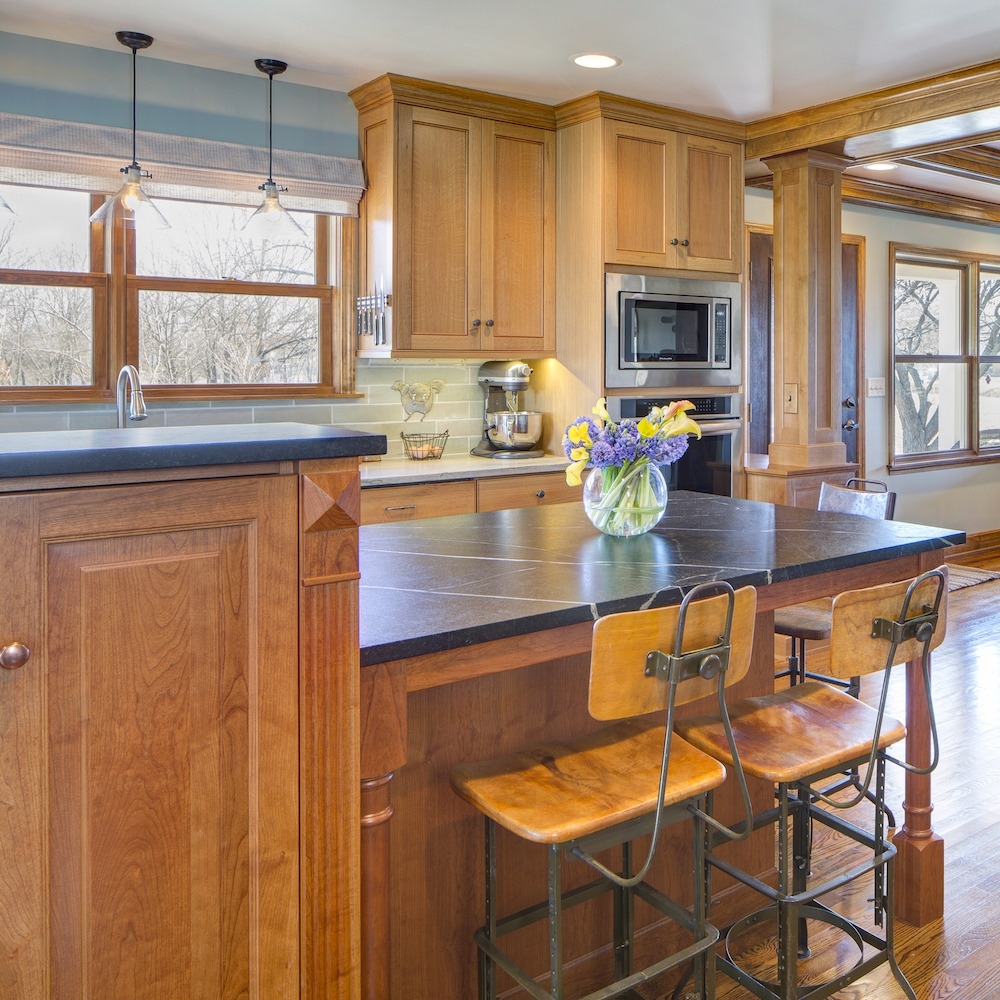
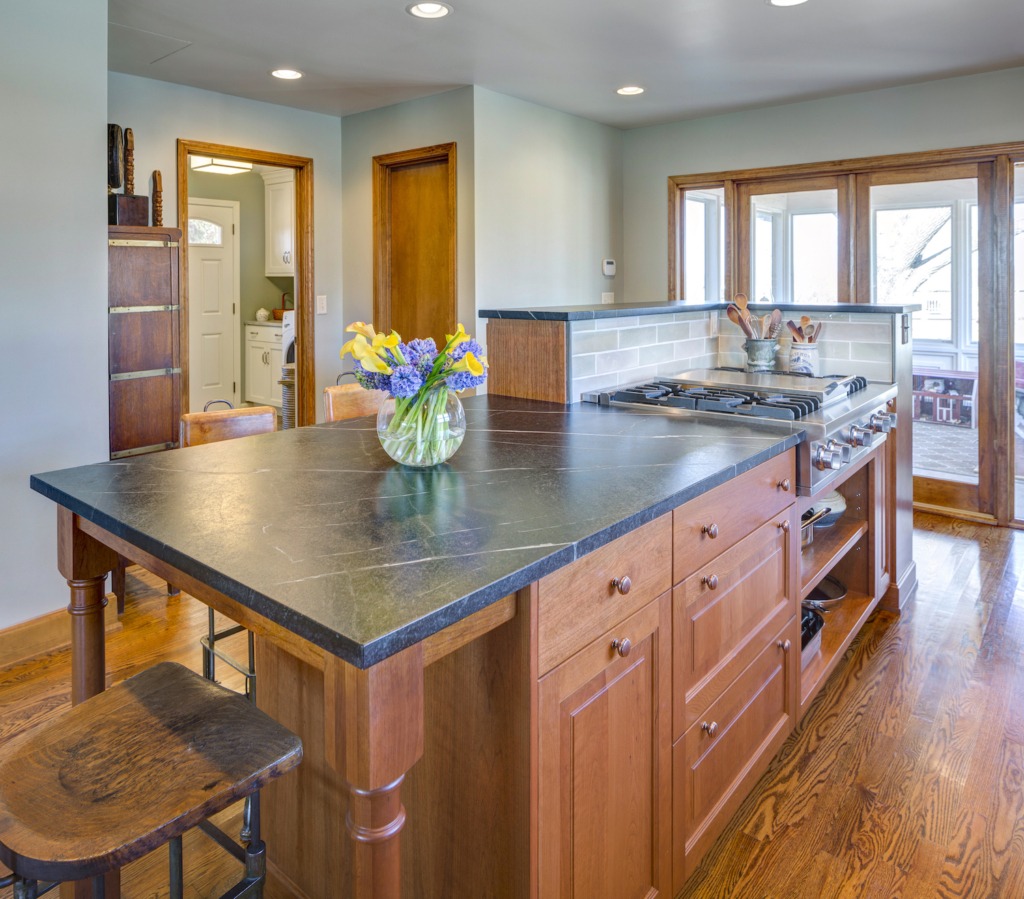
Soapstone
Soapstone is a natural stone that is not as commonly used as other stones such as quartz or granite. This material has a warmer appearance than other stones, and has a more organic, milky appearance than a slate would. Soapstone is not always a mid tone gray, it can range from being light gray to deep gray or even green. Soapstone being a natural material, it is prone to chipping, scratching and staining due to oils etc. However, it is not required that it is sealed if it is in the appropriate application. The look of soapstone is classic and as it ages you will get a stunning patina. This material provides a look that is much more antiqued than what you would get out of a darker quartz or marble. Soapstone also has some interesting properties that make it warmer to the touch. Much of the soapstone that we use in our projects is mined here in the United States!

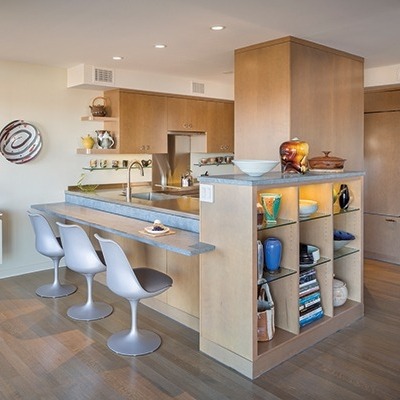
Stainless Steel
This countertop material is straightforward: stainless steel. We have all seen it and felt it, but maybe have not seen it in a kitchen application. At least one that isn’t a commercial setting. Stainless steel is great for those that are looking for an edge in their design, something that will stand out from the rest. There are a variety of finishes that stainless steel comes in, brushed, mirrored, directional grain, and matte. This depends on the overall look that you are trying to achieve with your kitchen design. Being a metal, stainless steel counters stand up to heat, water, and are stain resistant. There is little maintenance needed other than routine cleaning after cooking a meal. Stainless steel countertops will scratch but over time this will add a patina. There are opportunities to seal the countertop to prevent some of the scratching that will happen.
One question we always get when it comes to countertops is the cost. A basic rule of thumb would be that granite and quartz are your starting off points. Once you make the jump from laminate this is the next step. You must also keep in mind that some quartz options and some granite options are not at that base level and in fact can creep up to the higher range quite quickly. Wood butcher block can be an inexpensive option but as you get into the more exotic wood species and decorative edges the cost will increase. Marble, soapstone, stainless steel will be on another level. The best thing to do is to ask for some estimates early on in the design phase. This will help in the decision making process!

